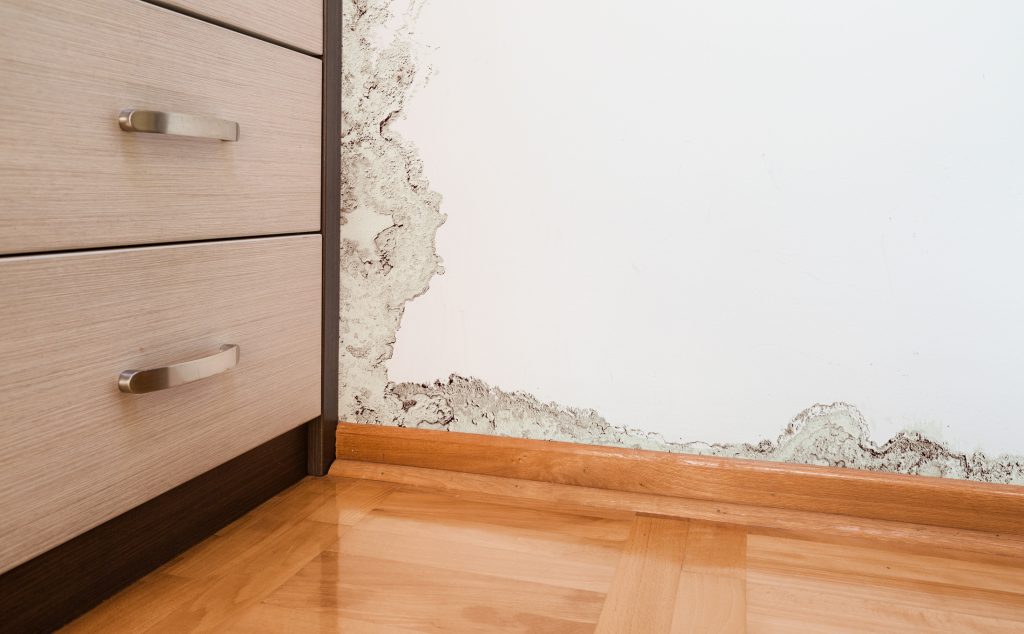What is rising damp?
You have probably heard the term ‘rising damp’ before, and fearfully associate it with mould engulfing your house, but what exactly is it? Rising damp occurs when groundwater rises up through the porous walls of a building via a ‘capillary action’. This means the water is sucked up through tiny tubes in the masonry, in the same way a sponge soaks up water in the sink.

Signs you have rising damp:
- The most common sign of rising damp is a band of wetness on your wall that begins at the floor and rises about a metre high. The paint or wallpaper might be flaking or peeling in this area as well.
- There could be a damp or musty smell in the building.
- The dampness can make it a colder temperature at the bottom of the wall.
- Your floorboards and skirting boards are rotting or decaying.
- Salt deposits could be visible on the walls.
- Black mould can grow above the skirting boards.
Side effects:
- Your wallpaper, paint, masonry and skirting boards will be damaged, which means you have to carry out expensive repairs.
- It can create cold walls, which makes your heating costs rise.
- Rising damp makes your house an unhealthy environment to live in. The mould and fungus which grow from the damp can cause problems with your respiratory system, such as asthma.
- Damp walls also attract insects and pests.

What causes rising damp?
Most buildings have a barrier installed inside the lower levels of the structure to stop water from rising. This is called a Damp Proof Course (DPC). The DPC is created with non-absorbent, water-resistant materials such as slate, bitumen, or plastic. Old buildings usually don’t have one, and if you have a DPC in your house, it can still fail over time. Unfortunately, you may even experience rising damp if your DPC is in perfect condition. This is called a ‘breach’ and happens when something attached to your walls is allowing water to move around the DPC, for instance steps, or higher ground. You could also have debris in your wall cavity, and if it reaches above the DPC then it can be another bridge for damp.
The solution:
The best way to treat rising damp is to have a professional install a new chemical Damp Proof Course. The chemical cream is injected into holes in the mortar joints of the walls. It then becomes a liquid and penetrates the mortar, slowly becoming fully absorbed. This chemical creates a strong water-repellent barrier that can stop rising damp. After dealing with the DPC, you can then replaster the walls in any affected areas and improve the aesthetics of your house.
If you need help identifying and treating rising damp in your building, Avant Garde Damp Solutions are the way to go. Since 2003, we have expertly solved any rising damp problems in homes and work premises throughout North and West London, including Ealing and Hemel Hempstead. If left unaddressed, rising damp can affect the structural integrity of your property, and even your health, so don’t hesitate to contact us as soon as possible.





